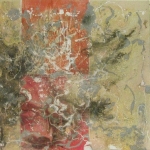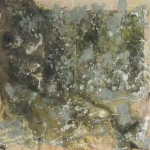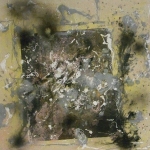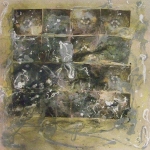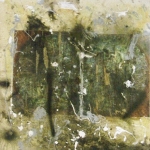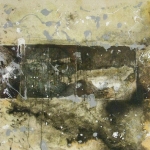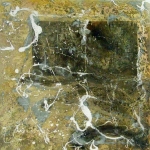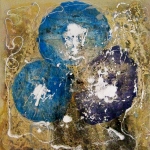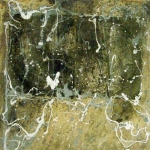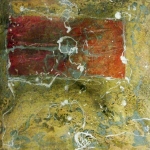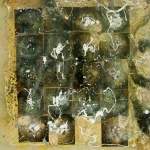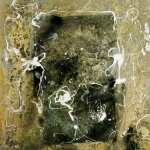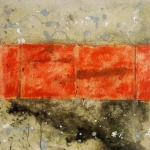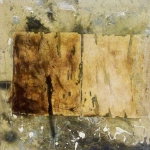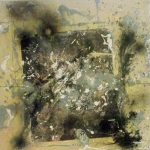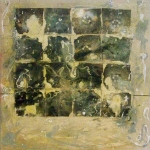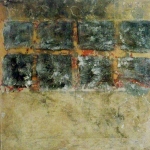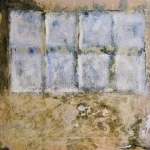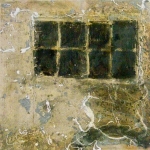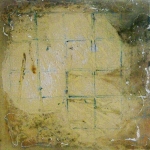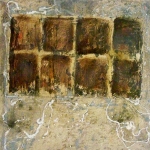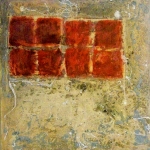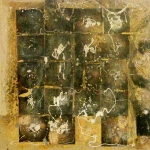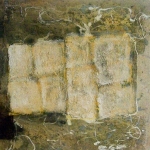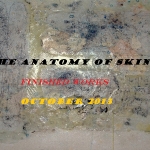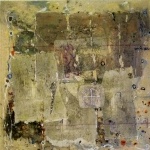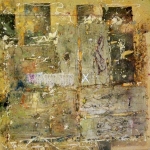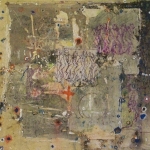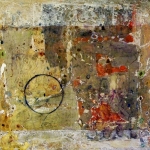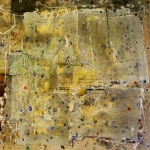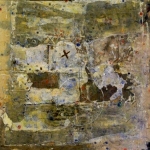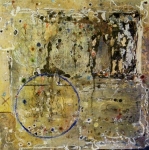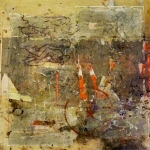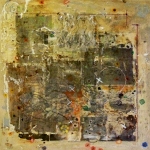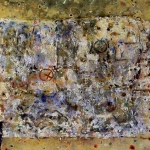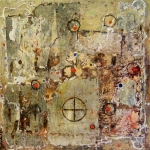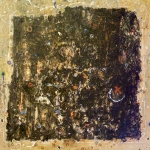“The Anatomy of Idea”
In the journal the attempt is to document the process of the work from its spontaneity in the beginning and sharing the process of the works and how they change at each level until the pieces take on their own significance. They should still conform to the overall theme of the series the anatomy of skin. What is the Anatomy of Skin? The image of the work should bear out what the paintings are about. To say what the content is before they are inherent in the work makes it more difficult to paint it if it can be said using words.
“The Anatomy of Skin”
Works in Progress
Statement 1
“The Anatomy of Impulse”
The new ideas represent the spontaneous beginnings of the new series ‘The Anatomy of Skin’. These images identify how the pieces are constructed. They are the beginnings and will show through the various happenings of the process until they are completed to stand on their own. Materials are poured unto and into the surfaces in a rhythmical fashion At this first stage the works are in their curing process where scraping, etching and other types of manipulative reworking of the initial images are done to refine them for the second intention.
June 25, 2011
“The Anatomy of Skin”
Works in progress
“The Anatomy of Composition”
Statement 2
The struggle with making paintings that work well each time you create them is with employing the elements of composition that pulls the viewer into the image every time with ease. The anatomy of impulse is an effort to release pent up energy unto the surface. There is always something to comment on about this existence. Allowing the materials to get to the canvas without restriction and then to make sense of the chaos or inner feelings works well for the freshness of each series. I see things in a different skin with each series I paint and the idea is how to best compose and express those raw inner feelings for content and reflection. The anatomy of compostion begins with the idea of a landscape. The canvas is divided into two parts; sky and earth, top half representing the sky and the bottom half representing the land. When materials are poured onto to canvas in an impulsive fashion, new compostional effects start to resurface, refract and illuminate themselves. Working and reworking the materials until you are guided to the light, focal point or composed perspective readies the image to express its contents clearly. Working at eye level {wall} and below[floor} helps to keep in action, impulse and structure which is still another form of perspective. Each canvas begins to show its own perspective, multiple points of entry to the focal point or layered perspectives, mutiple skies and land because of the reworking of each layer of material. An important feature of the work I do is to allow for the first mark to be just as visible as the last stroke that I make on and in the surface. Every painting began as part of one giant painting that is later separated to take on their individuality. This adds to the continuity of compostional materials and elements that flow through all of them. As we speak they are in the anatomy of change.
August 25, 2011
“The Anatomy of Skin”
Completed Works
“The Anatomy of Content”
Statement 3
And after months upon months of working and reworking the surfaces, finally something has emerged that I can live with. Each piece has taken on a personality of its own. In each, the chaos of the first step, composed by the mechanics of structure, and then layers upon layers of my own palimpsestuous mark making on top of mark making. They have evolved into showing the structure of each painting. The raw canvas sometimes peers through mingled with the last stroke of spirit and passion. The struggle to compose the elements which is the materials, to render it immaterial with the imposition of content. Content with that which holds the flesh of paint coupled with the feeling of a skin that holds it all in. The process and thought is seeing materials in a new way, some more fluid than others, and others more rigid than some. Materials can give rise to the invisible.
Bariffe
October 5, 2013

